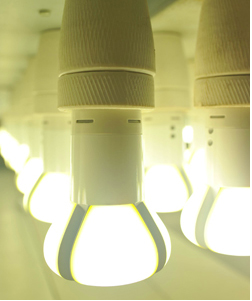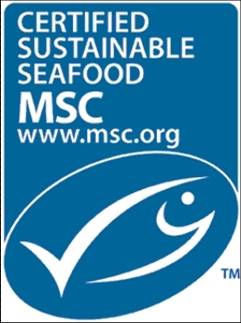Posted on November 17, 2009 by Carlyn Hall

Philips Electronics LED bulb Source: Kimberly Janeway's blog at consumerreports.org
On the NPR show, Science Friday, it dedicated a whole show to the US Department of Energy’s (DOE) Bright Tomorrow Lighting Prizes (L Prize) Competition and how Phillips Electronics is the first company to enter. The guest speaker for this show was Jim Brodrick, Lighting Program Manager for the Building Technologies Program (with DOE). Brodrick was very pleased to have Philips summit their bulb because he believes that this will spur other companies to enter. Continue reading →
Filed under: In The News | Tagged: consumption, Energy, technology, US | Leave a comment »
Posted on November 11, 2009 by Carlyn Hall
There is concrete evidence that climate change is mainly due to anthropogenic actions. We are emerging into a world where consumers are becoming more concerned on where their food is coming from and the impacts that food production has on the environment. Recently, cattle farmers are targeted in terms of rearing practices and amount of methane gas cattle emit. Although, methane is a natural by-product from a cow, there are increasing concerns with the high demand of beef and therefore an unhealthy amount of cattle that are reared to meet the beef consumption—especially in the United States. Continue reading →
Filed under: In The News | Tagged: consumption, Copenhagen, Energy, environmental sustainability, technology | Leave a comment »
Posted on October 26, 2009 by judithrf
There have been several proposed programs for eco-labeling seafood products in an effort to provide incentives to fisheries managers to create sustainable fisheries. The purpose of these initiatives is to provide a market-based incentive for sustainable fisheries management
According to the UNFAO, about 70 per cent of our global fisheries are now being fished close to, already at, or beyond their capacity.
Eco-labeling has become a useful tool for governments in encouraging environmental practices. It serves as a market-based instrument intended to bring about environmental improvement.
Having certified eco- labels on its products shows the public that fish companies are committed to providing healthy and safe products for consumers.
Are you willing to pay for sustainable fish?
Continue reading →
Filed under: In The News | Tagged: consumption, environmental sustainability | 2 Comments »
Posted on October 22, 2009 by morgandrew
Somewhere off the coast of California, between Hawaii and Japan lies a vortex of “plastic soup” twice the size of the continental United states. Held together by underwater currents, 100 million tons of “flotsam,” as floating trash is known, “moves around like a big animal without a leash,” according to oceanographer Curtis Ebbesmeyer.

It seems unlikely that such an enormous mass would have gone unnoticed by science until fairly recently. Yet, the flotsam evaded satellite imagery because it resides underwater. Scientists studying the North Pacific flotsam warn that unless consumers radically change their behavior the flotsam will double in size over the next decade. While there are significant environmental implications for marine animals the impact on human health must be a concern: Chemicals from plastics (such as DDT and hydrocarbons) leach their way into the food chain, ultimately ending up on your dinner plate.
Check out the entire article over at The Independent. Thank you Kathy Marks and Daniel Howden!
Filed under: In The News | Tagged: consumption, waste | 4 Comments »





